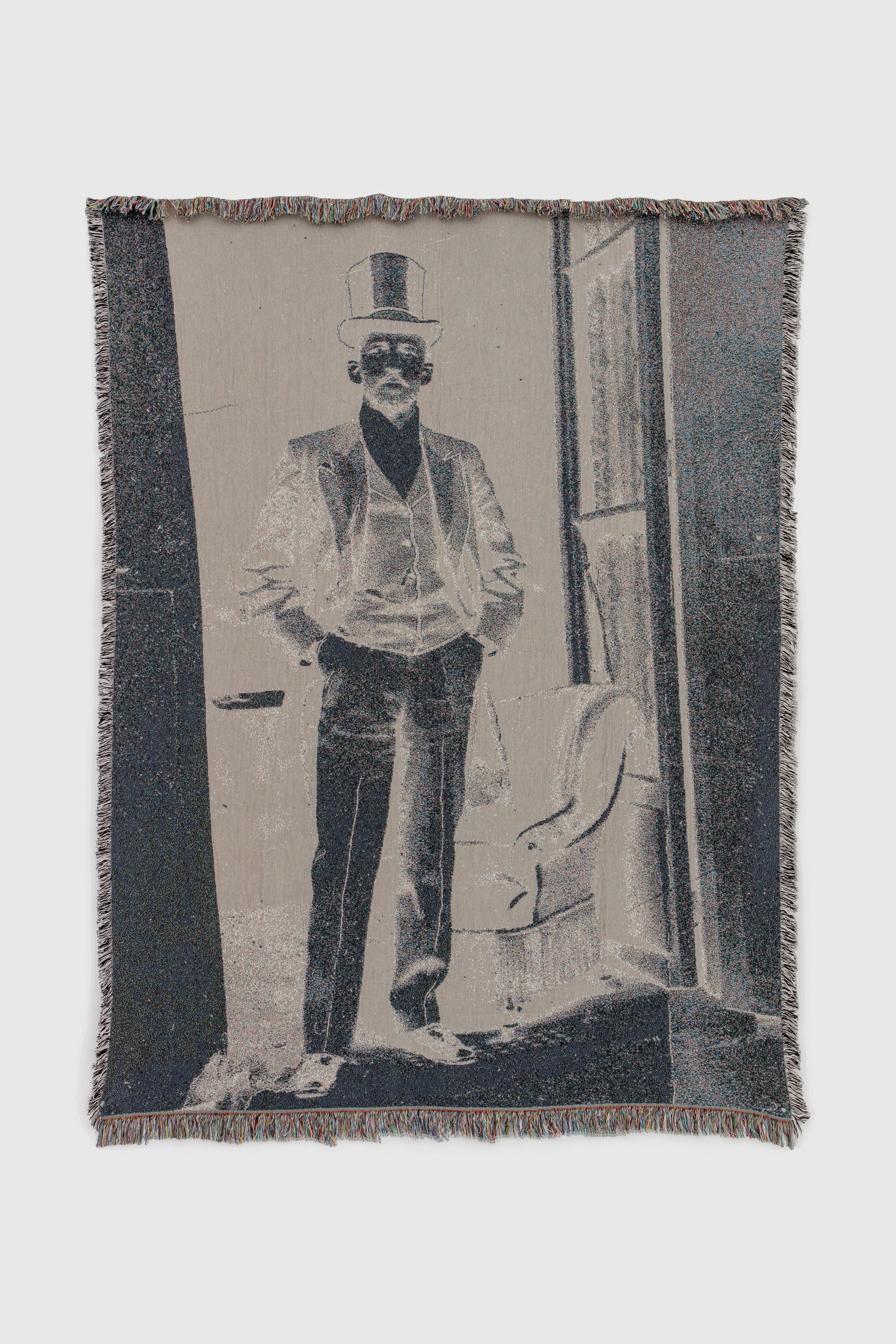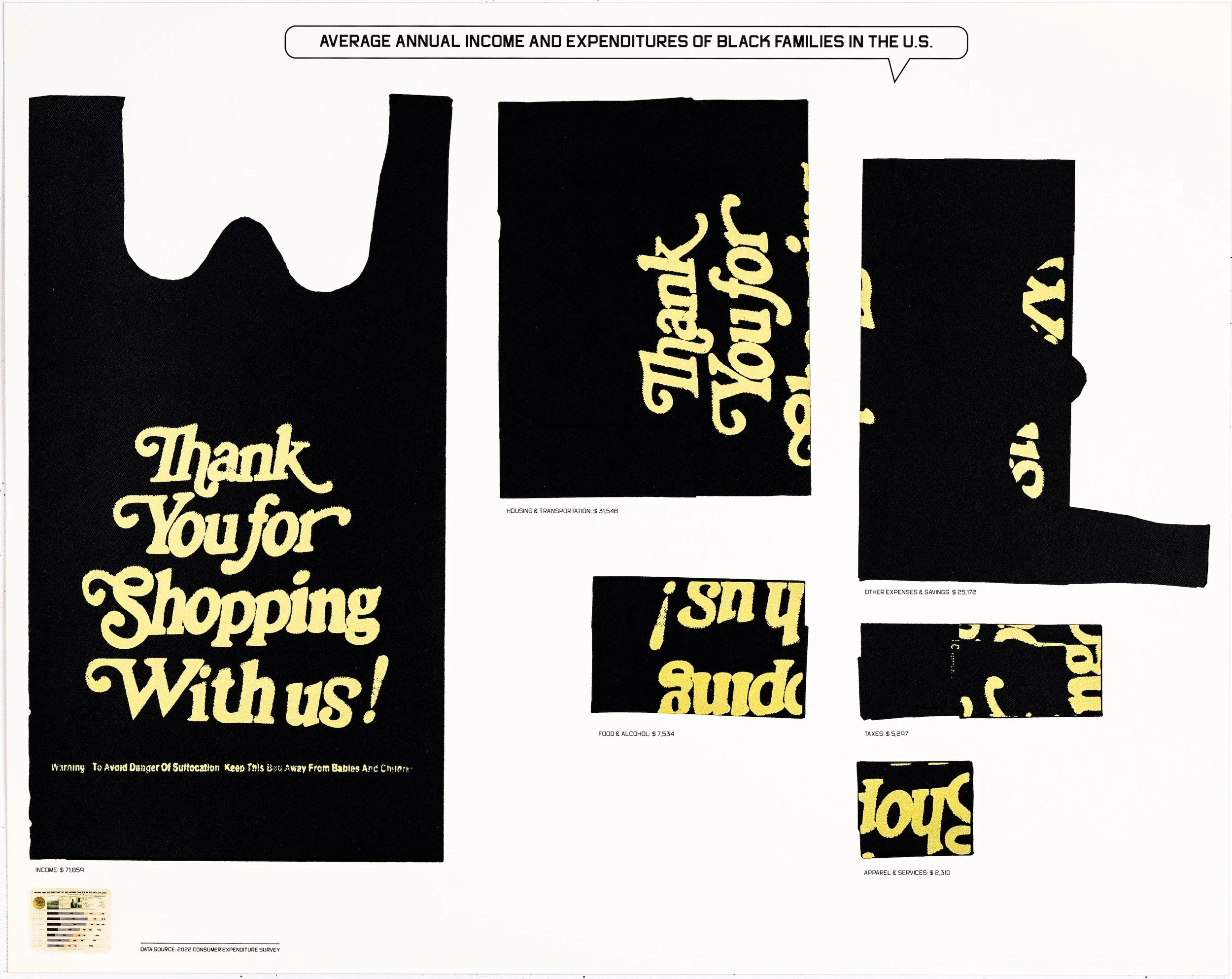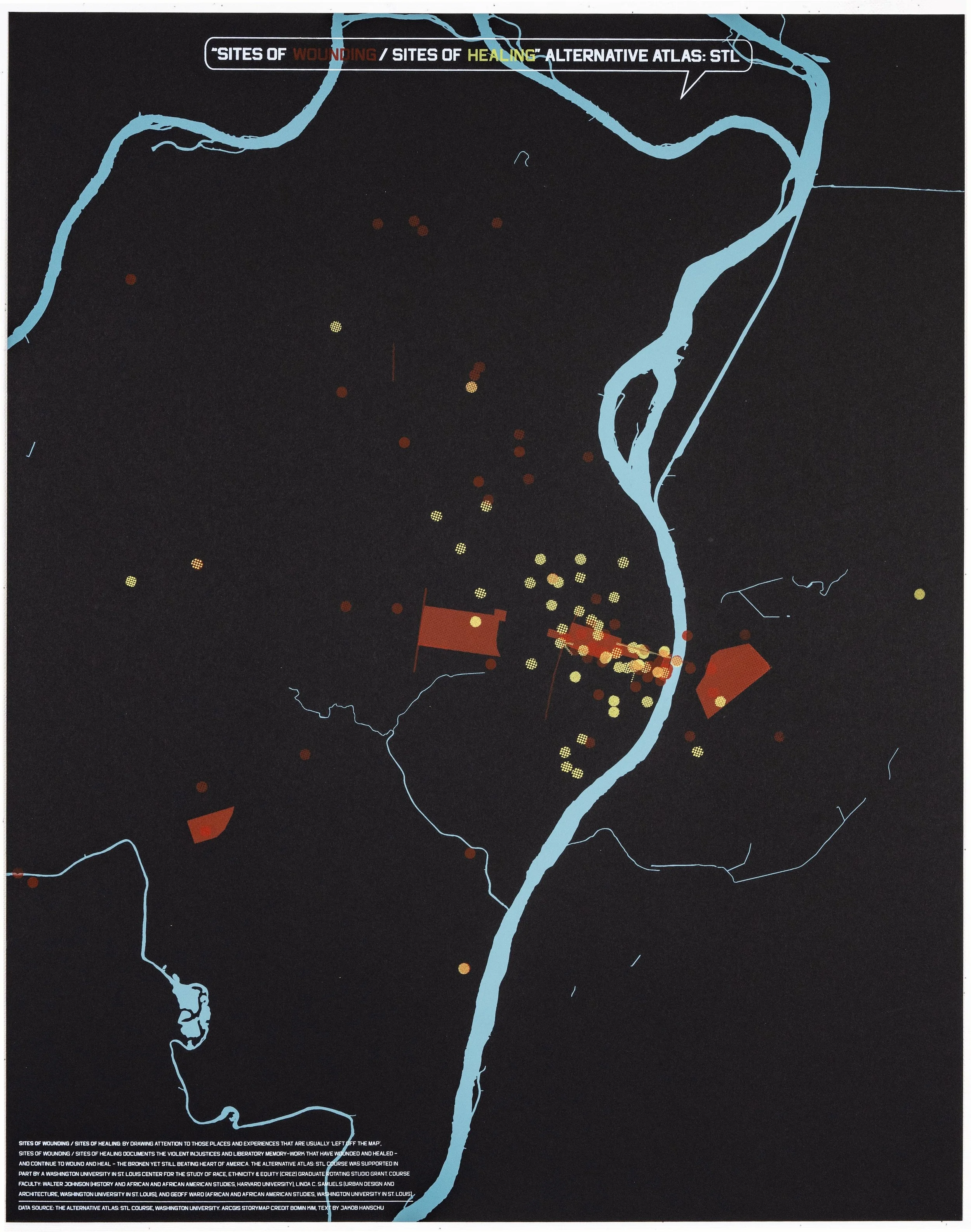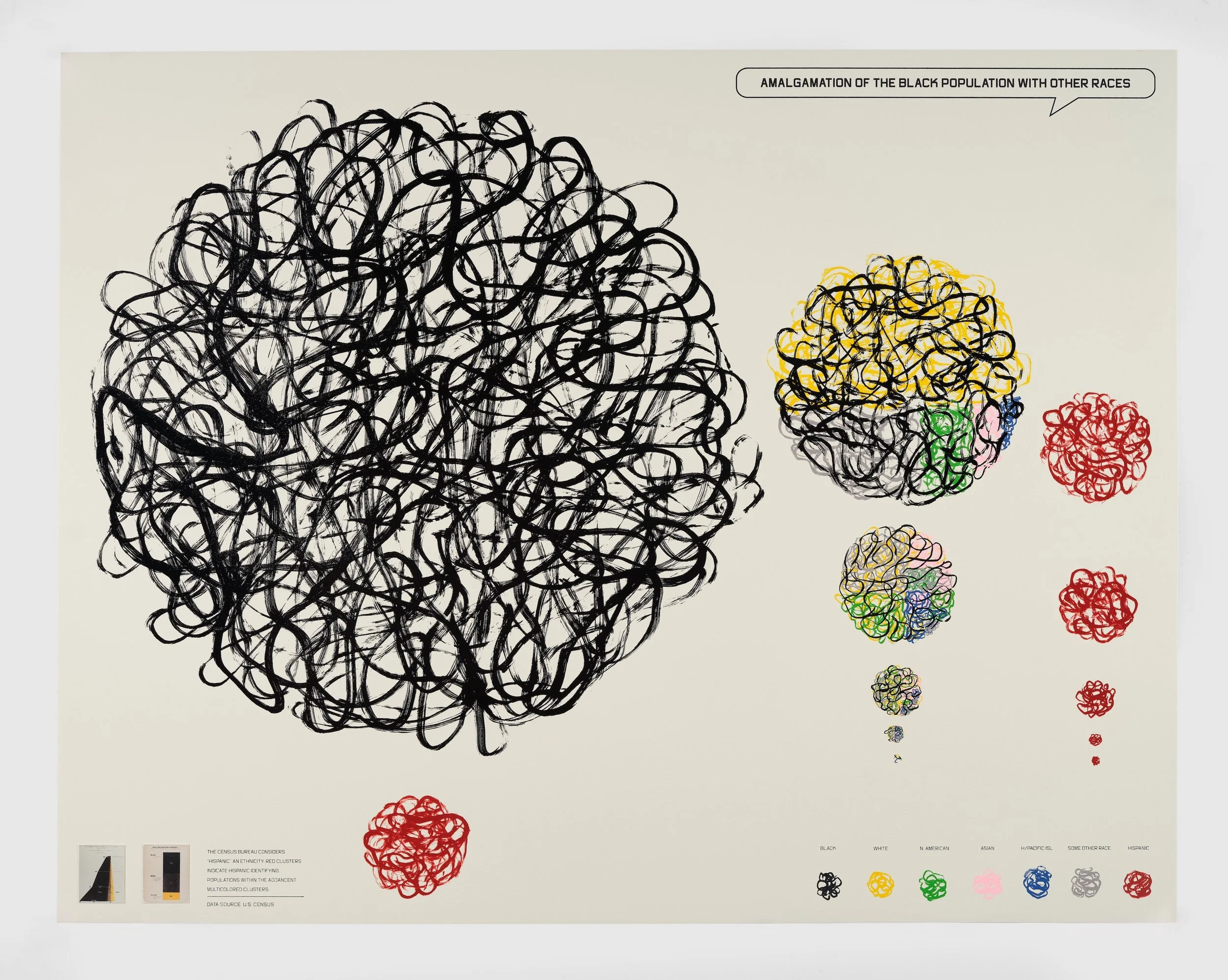Tiffany E. Barber on ‘Data Consciousness: Reframing Blackness in Contemporary Print’
The group exhibition is on view until December 13 at the Print Center New York.
© Silas Munro. Image courtesy Silas Munro. Photo: Charles White/JW Pictures.
In the early 1900s, W.E.B. Du Bois coined the concept of ‘double consciousness,’ referring to a two-ness of being a Black American. In his 1903 book, The Souls of Black Folk, he stated, “an American, a Negro; two-warring ideals in one dark body, whose dogged strength alone keeps it from being torn asunder.”
Until December 13 at the Print Center New York, the group exhibition Data Consciousness: Reframing Blackness in Contemporary Print comprises works by Tahir Hemphill, Julia Mallory, Silas Munro, Kameelah Janan Rasheed, William Villalongo, and Shraddha Ramani. Curated by Tiffany E. Barber, the exhibition confronts the complexities of double consciousness in relation to race, technology, and representation in a data-driven world.
Data Consciousness: Reframing Blackness in Contemporary Print also references Du Bois’s works at the 1900 Paris Exposition, where he exhibited Black life post-Reconstruction through graphs, charts, maps, and photographs. In these notable archived works, Du Bois has reshaped how Black people can measure progress and change within the community.
To bring Data Consciousness to life, these artists came together to envision expansive information on Du Bois’s legacy and how his efforts still apply today. Together, artist William Villalongo and urbanist Shraddha Ramani created a collaborative research-based print portfolio titled Printing Black America: DuBois’s Data Portraits in the 21st Century. This project examines the data visualization of the Black population, as presented in the U.S. Census, and images from six print publishers across the United States and Puerto Rico.
© Villalongo Studio, Shraddha Ramani, and Island Press, St. Louis. Image courtesy Island Press. Photo: Carol Green.
Silas Munro pays homage to Du Bois’s legacy by acknowledging the overlooked history of Black modernism and design that has contributed to the progress made today, particularly in the advancement of the LGBTQ+ community. Kameelah Janan Rasheed demonstrates how Du Bois transforms data into a nuanced, text-based minimalism.
Through immersive visual histories and community data projects, Tahir Hemphill shows the harmonization of hip-hop poetics, writing, photography, 3D-printed sculpture, and literature. Julia Mallory reimagines Du Bois’s drawings by animating them and incorporating her own family heritage. She uses stop-motion collage and storytelling to visualize the lineage of the past and future.
While Data Consciousness was carefully curated by Tiffany E. Barber, she did not expect to be tapped by Print Center’s Judy Hecker for such a prestigious position and responsibilities. “We didn’t really know what we were doing at the time,” Barber says. “It seemed cool, and we had a lot of support from the Print Center. Judy Hecker was really enthusiastic about working on something together. We didn’t know what that something would be, but she said she liked working with me and that I have a great vision and voice.”
Barber was still in the middle of her research and portfolio on Du Bois when Hecker asked her to curate the exhibition. However, the synergy clicked quickly. Barber continued this research as she curated Data Consciousness, and says she will continue it after the exhibition as well.
© Villalongo Studio, Shraddha Ramani, and Island Press, St. Louis. Image courtesy Island Press. Photo: Carol Green.
“Du Bois is such an important thinker and was really turning to art, art history, and exhibition-making at a really interesting time,” Barber says. “At the turn of the 20th century, he had already experimented with data portraits in 1896 when he published The Philadelphia Negro. He continued to invest in art, exhibition-making, and Black representation for the rest of his career.”
When Du Bois confronted systemic, social, and climate issues in the 20th century, Barber felt compelled to delve deeper, as many of these issues remain prominent today. She emphasizes Puerto Rico’s critical role in the production of many of the prints to further understand how Blackness and data portraits operate in different parts of the world, even if it’s a U.S. territory.
“This is the first kind of project where a team of artists collaborates with multiple print workshops,” she says. “This has never been done before. It came out beautifully, and each workshop has its own specialty and concentration. You’ll notice textures throughout the portfolio, like raised pointilism, particular signatures, punctuations, the context of Du Bois’s prints, and how they’re repetitive in history today.”
Every print in Data Consciousness has a story behind it. For example, one of the portfolios, comprising five prints, was created in Portland, Oregon. The portfolio documented an organization named Justice for Black Lives in Oregon. We soon learned that Oregon was a sundown state up until the 1970s. A lot of these organizations were galvanized by unrest in response to George Floyd’s murder.
© Villalongo Studio, Shraddha Ramani, and Powerhouse Arts, Brooklyn Image courtesy Print Center New York. Photo: Argenis Apolinario.
“As a curator and thinking about this framework, it became really important to underscore the ways in which Du Bois’s methods really stay with us today,” Barber says. “He’s made an impact on African American communities that are organizing amongst themselves to advance a quality of life for each other. Given the police and surveillance state under which we’re living, those spaces of dialogue and direct action, intramurally, are going to become more important.”
The exhibition raises questions about what a network is, whether it serves a greater good, how we measure data, and where liberation lies within that. As technology is accelerating and advancing at a rapid rate, it’s also important to question why this is happening. Most of the time, it’s due to Black people being exploited for their labor around the world.
“There is a direct connection between Black subjugation and the acceleration of technology,” Barber says. “That’s something the exhibition thinks about—how aesthetics can be political—and the relationship between technology, data, and surveillance now. We’re all circumscribed by and inundated with images, technologies, phones, and screens everywhere.”
When it comes to whether technology has a positive or negative impact on Black and Brown communities, there is no definitive answer. Data Consciousness eliminates the binary of a black or white answer by examining those limits through solidarity, community, and how these intertwining complexes impact our daily lives. Whether it’s through printing, data, research, or archiving, Data Consciousness: Reframing Blackness in Contemporary Print further proves how these concepts shape our present and future.




